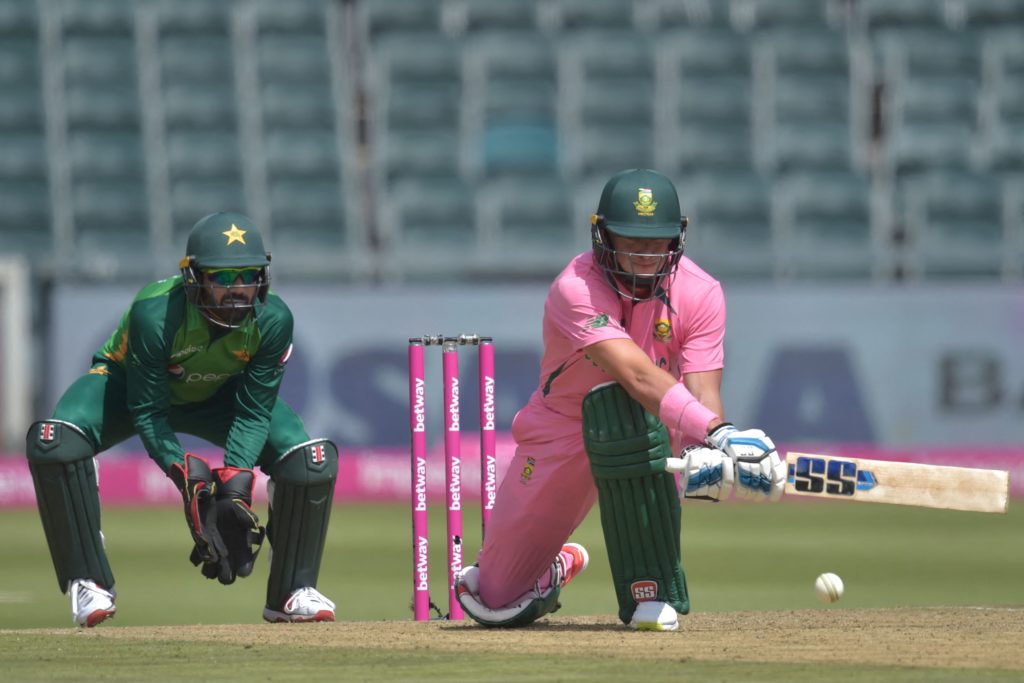The Proteas have the makings of a very good one-day side, and there’s a path for them to be among the format’s elite if they address some deficiencies, writes RYAN VREDE.
The South Africans levelled the series with Pakistan this past Sunday, and did so showing glimpses of the fullness of this team’s potential.
Are they at England or India’s level? No. But they’re in the infancy of their development as an ODI unit, while the top-two teams in the format have grown together over a number of years. On the evidence not only of this series, but the team’s performances under head coach Mark Boucher, there is plenty to be excited about in this format.
In the 19 matches prior to Boucher’s appointment, the Proteas won 11 matches, lost seven and had one no result. That team contained a clutch of world-class players who’ve since retired, including Hashim Amla, Faf du Plessis, JP Duminy and Imran Tahir.
Boucher inherited a team in transition, needing to rebuild a batting lineup shorn of experience and match-winning potential and a bowling attack that, while laden with talent, was short of experience.
Since taking over, Boucher has won five of the eight ODIs he has been in charge of, losing two, with one no result. Six of those eight matches have been against England and Australia, who are widely considered two of the best ODI sides in the world.
In the buildup to the Pakistan series, Boucher explained that the Proteas would be guided tactically by the philosophy of ‘brave cricket’. He highlighted the importance of maintaining an attacking mindset with bat and ball, particularly in the middle overs.
Losing early wickets in the first ODI in Centurion hampered this effort, but they recovered well to post a competitive target. On the bowling front, they had no answers to a set partnership on a flat deck, and ended up losing in the final over.
Their response on Sunday at the Wanderers showcased what this side offer when the majority of the team touches or comes close to the ceiling of their potential. There is something in this Proteas side.
Temba Bavuma’s 92 was crucial in establishing the type of lead-from-the-front respect any new skipper craves in the dressing room. Bavuma averages 48 after seven ODI innings, and while he is in the early stage of his ODI career, that record embarrasses the still widespread criticism of him and his appointment.
At No 4, Rassie van der Dussen has emerged as a consistent and match-defining player. He averages 83 after 17 ODI innings, and backed up his century in Centurion with a 60 off 37 deliveries in Johannesburg. His rise takes on additional importance with Du Plessis recently retired.
David Miller, who for the longest time betrayed his immense gift with frustrating inconsistency, has scored 273 runs in his last six innings, and has only been dismissed twice in that period. That sequence of scores reads: 69*, 64, 37*, 3*, 50, 50*. His innings at SuperSport Park demanded technique and temperament in equal measure, while Sunday’s innings of 50 off 27 deliveries was typically explosive.
Combine these three plus points with a welcome return to form for Quinton de Kock. The former skipper hasn’t passed 30 in his last four ODI innings, but he played with the freedom that his reputation has been built on.
His opening partner, Aiden Markram, continues to frustrate, though. As has been the case for the bulk of his 25 ODI innings, he looked irrepressible on Sunday before a brain fade cost him his wicket for 39. In those 25 innings, Markram has been dismissed 15 times between 20 and 50. Brain fades are defining his ODI career at this point. He and the coaching staff need to figure this out quickly. There is significant incentive to do so from an individual and team perspective.
Heinrich Klaasen’s mini slump in form is another concern. He came into the 2020 series against Australia playing for his international career and excelled, scoring 242 runs across three innings. While his place is probably not in jeopardy, he needs a significant contribution, particularly since the in-form Kyle Verreynne is waiting in the wings.
The all-rounder spot continues to be a point of debate. Andile Phehlukwayo, the incumbent, averages just shy of 30 across 25 innings. This is hardly a poor return, but this doesn’t reflect his batting talent, which needs to be invested in. Wiaan Mulder’s presence in the squad should keep him honest.
On the bowling front, Anrich Nortje’s potency in the middle overs has added a threat dimension to the Proteas attack. He got his side back into the contest in the first ODI, and heaped the pressure on Pakistan in the second during that same period by dismissing three batters, including the in-form Babar Azam.
Kagiso Rabada hasn’t played regularly in the format, but remains one of the world’s best white-ball bowlers. The supporting seam cast of Lungi Ngidi and Phehlukwayo are highly skilled and warrant further investment.
However, there are concerns around Tabraiz Shamsi’s role in the context of the Proteas gameplan. Boucher wants his side to take wickets during the middle overs, a role Shamsi’s predecessor, Imran Tahir, excelled at. This was central to the Proteas’ ODI success in the prime of Tahir’s career, and Shamsi is running out of time to evolve from a stingy tweaker (he has an excellent economy rate of 5.31) into a consistent wicket threat that kills the opposition’s challenge in the middle overs. With Keshav Maharaj’s rise as a white-ball player, and the fact that he offers the Proteas more as a batter, Shamsi will be acutely aware that he has to adapt.
Overall there is more to celebrate than there is to be concerned about. In addition to the players who’ve contested the series, there are also a clutch of talented players in reserve.
The Proteas are in a good space.







